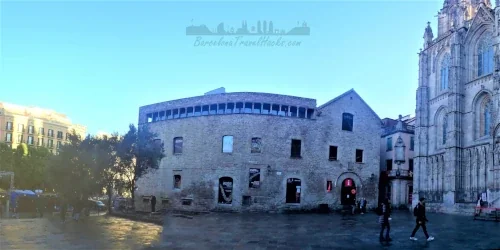Warning: Undefined array key "HTTP_ACCEPT_LANGUAGE" in /home/barcjkkl/public_html/App/Config/MySQL/language.php on line 32
Deprecated: explode(): Passing null to parameter #2 ($string) of type string is deprecated in /home/barcjkkl/public_html/App/Config/MySQL/language.php on line 36
Mercat de Santa Caterina - Santa Caterina Market in El Born
Food market from 1848 with remodelled roof (2005) by Enric Miralles and Benedetta Tagliabue. contains a small display area preserving historic ruins
About Santa Caterina Market
Across the main road from the Barcelona Cathedral lies an interesting building with an undulating, brightly coloured roof. This cathedral like roof covers Santa Caterina market.
Santa Caterina Market History
In 1835 a convent was demolished to create space for the Market. The square of Santa Caterina was formerly called the square of the Carts, in which a pitcher fair was held on the day of Sant Domanec. The monks of Santa Caterina had a well in the cloister, the mouth of which disappeared in one of the old renovations of the Market. The water in that well was considered miraculous to cure malaria and in order to prevent the water from being polluted, a pitcher was used fetch the water, which is why the pitcher fair was set up.
The market began in 1844 and was inaugurated in 1848 after a royal decree granted the Barcelona City Council old ecclesiastical land to proceed with its construction. The architect was Josep Mas Vila. He drew up an ambitious first project that would far exceed the squares and markets that existed at the time in Plaça del Born and Plaça de Sant Josep de la Boqueria but this plan was never constructed as it required the acquisition of adjacent land.
Nevertheless, the Market began, provisionally, In 1846 with a fishmonger's shop and several stalls. During the post civil war period, in the 1940s, it was the centre of supply for the local population and neighbouring towns of Sant Adrià de Besòs, Santa Coloma de Gramenet, Badalona, El Masnou, Mataró. People travelled to the market with the trams that terminated in Carrer de Trafalgar and Ronda de Sant Pere.
The last renovation project to add the roof was awarded to the team of architects of EMBT (Enric Miralles and Benedetta Tagliablue) and was "an ambitious proposal that goes beyond the rehabilitation and conservation of the market building, betting on a global revitalization of the market and its surroundings with a burst of colours and shapes".
Image Gallery for Image Gallery For Santa Caterina Market
Click on any of the 16 images to open full screen gallery player
Visiting Santa Caterina Market
A modernisation refurbishment was completed in 2005 by architects Enric Miralles and Benedetta Tagliabue. The renovation included the addition of an undulating roof supported by timber beams. The roof is tiles in 325,000 pieces of bright ceramic designed to represent the colours of the fruit and vegetables sold below. The old porticoed façade, rebuilt in 1988, and the side walls have been preserved from the old building, while the south façade of glass panels is from the 2005 refurbishment.
In the South corner of the market, there is a small display with exposed ruins of the former monastery (MUHBA Santa Caterina) and some information boards about the history of the area.
In this food market you can find fresh fish, poultry, seafood, meat, vegetables, nuts and legumes and pulses as well as cafeterías.
- Monday to Thursday: 07:30h to 15:30h
- Friday: 07:30h to 20:00h
- Saturday: 08:00h to 15:00h
Santa Caterina Market Opening Hours
What to take with you for What to take with you for Santa Caterina Market
Santa Caterina Market is step free access from the street with the market being on ground floor.
This food market can get busy so be cautions if taking large bags. Also be wary of pickpockets.
Bicycle anchorage points are outside the front and rear entrances to the market.
Tickets for Santa Caterina Market
Getting to Santa Caterina Market
Address: Av. de Francesc Cambo 19-25, Barcelona, 08003
Nearest TMB Metro is Jaume I on the yellow (L4) line. Use a T-Casual or Hola-Barcelona travel card.
Map for Santa Caterina Market
Weather for Santa Caterina Market
Where to stay overnight near Santa Caterina Market
8 Nearby Attractions to Santa Caterina Market
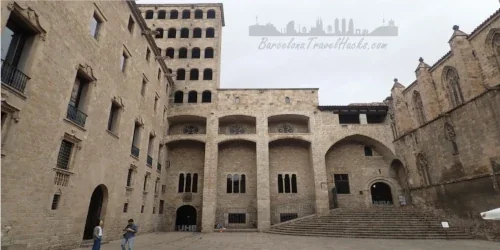
Barcelona City History Museum MUHBA Plaça del Rei
Ground floor is a large vault over preserved roman street ruins with extensive artefacts. The museum is inside Roman buildings and medieval palaces
Read more >

Palau De La Música Catalana - Famous Concert Hall
Art-Nouveau 1908 UNESCO concert hall by Lluís Domènech i Montaner with ceiling skylight. Guided tour tickets or visit for a concert
Read more >
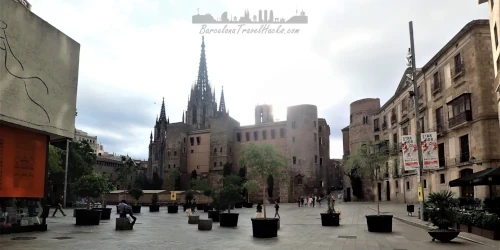
Barcelona's 14th Century Gothic Cathedral
Catedral de la Santa Creu i Santa Eulàlia in the Gothic Quarter. Visitor info, tickets & images from the cloister, cathedral & roof terrace
Read more >
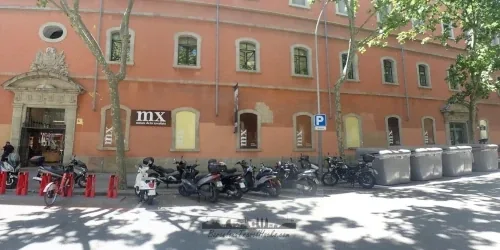
Museo de Xocolata - Barcelona Chocolate Museum
Visit to learn about Chocolate origins in South America, cultivation & arrival in Europe. Mythical & medicinal properties, & chocolate consumption traditions
Read more >
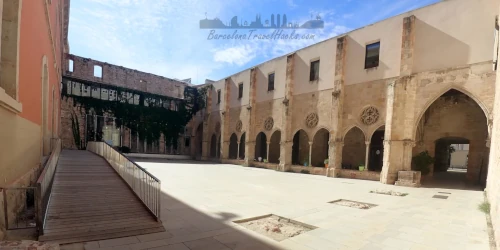
Former Convent Sant Agusti civic centre & café
Former convent that was demolished to make officers barracks in the citadel fortess. Now ruins & civic centre within a courtyard with a chic café bar
Read more >
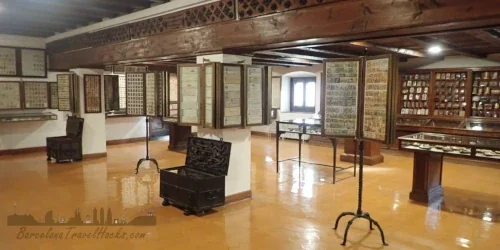
Frederic Marès Museum - sculptor's collections
Collections donated by Frederic Marès - twentieth century Catalan sculptor & renowned collector. Housed in part of the Palau Reial Major
Read more >
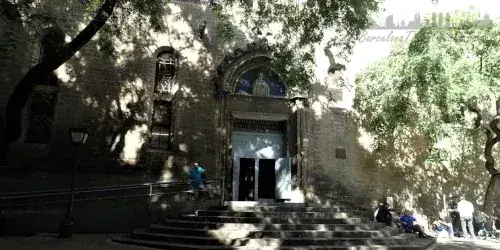
Sant Pere de les Puel·les Church Medieval monastery
10th Century Romanesque Benedictine monastery. What remains today is the 11th century ground floor church with cross floor plan
Read more >
